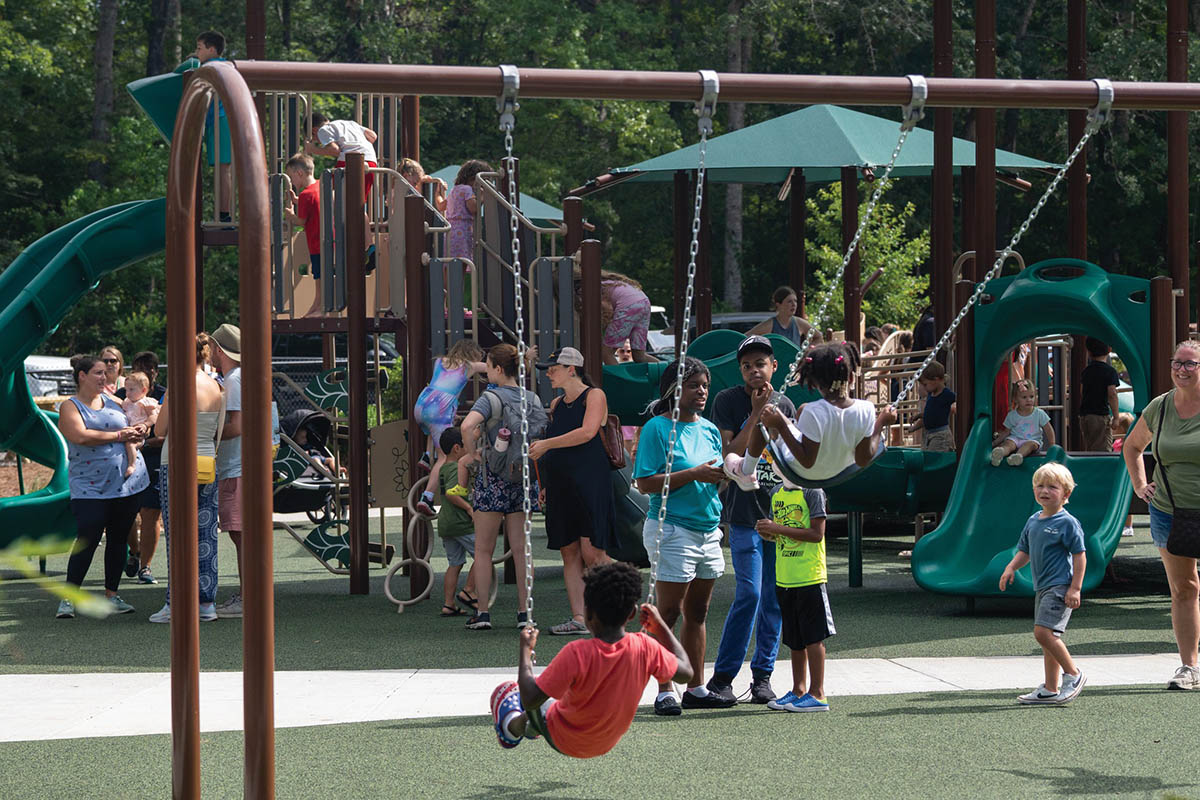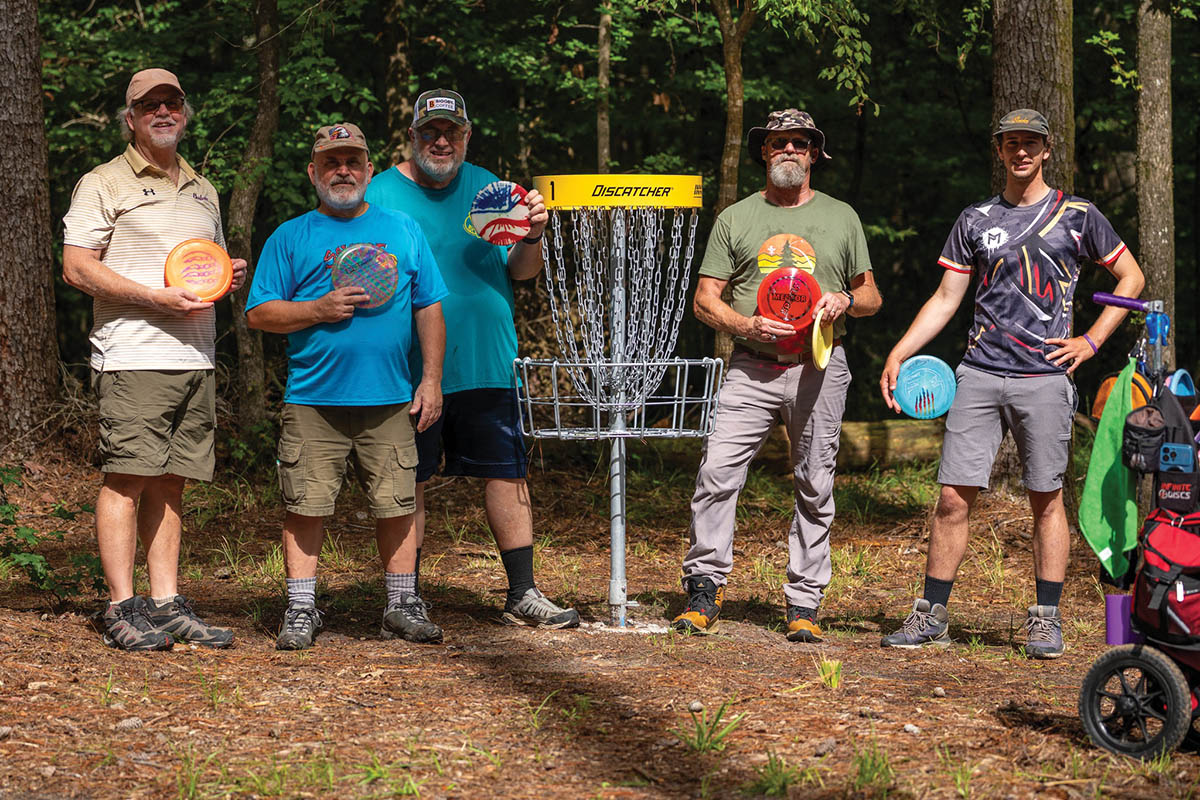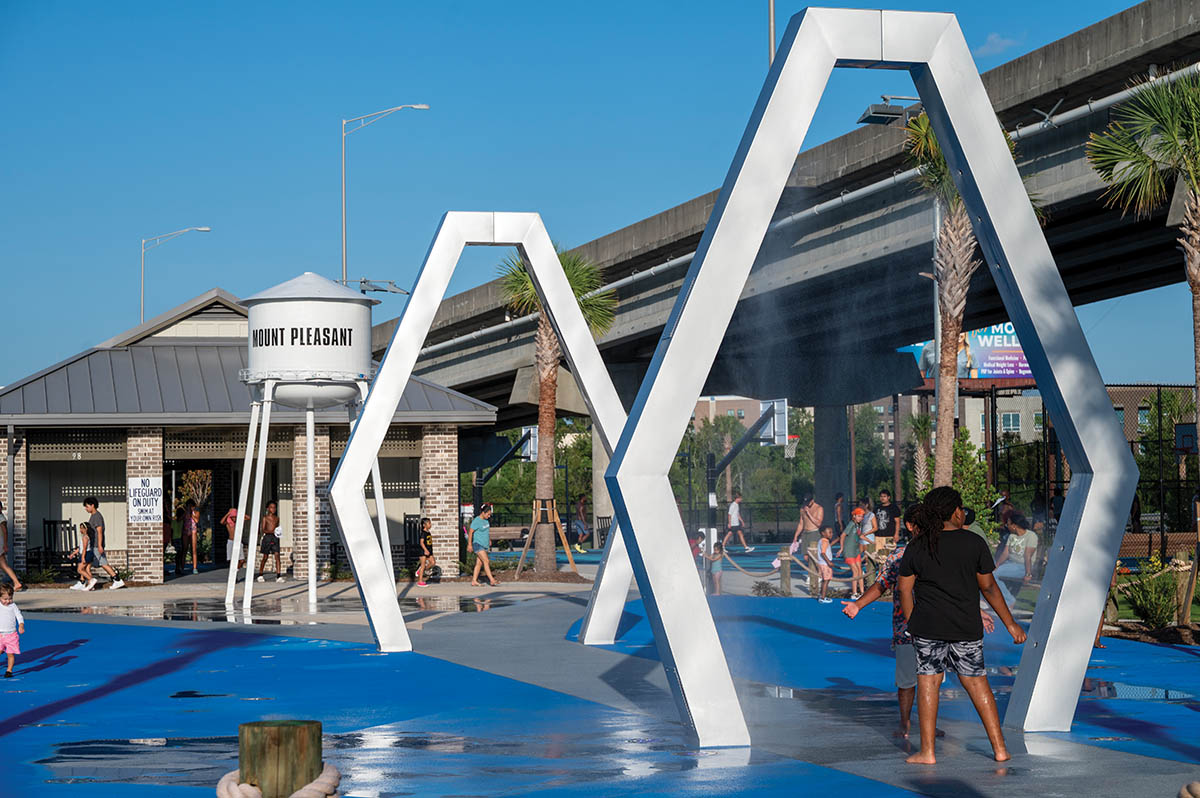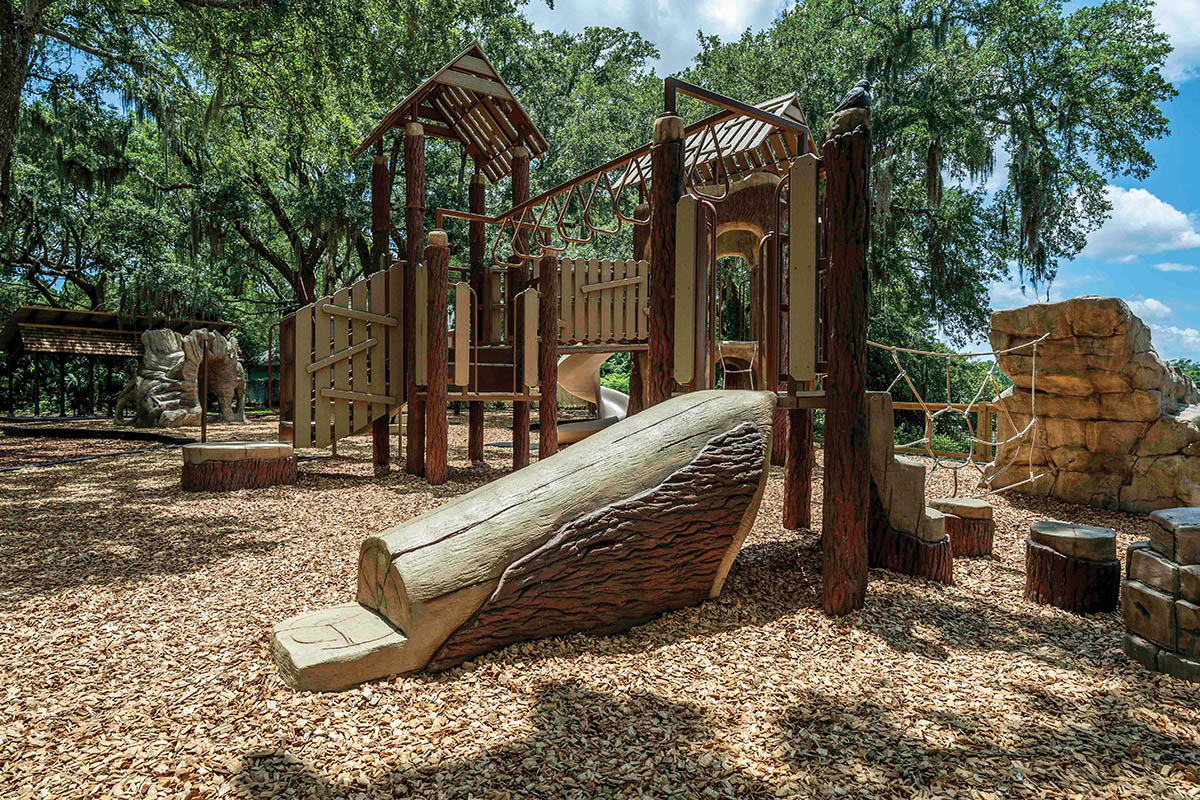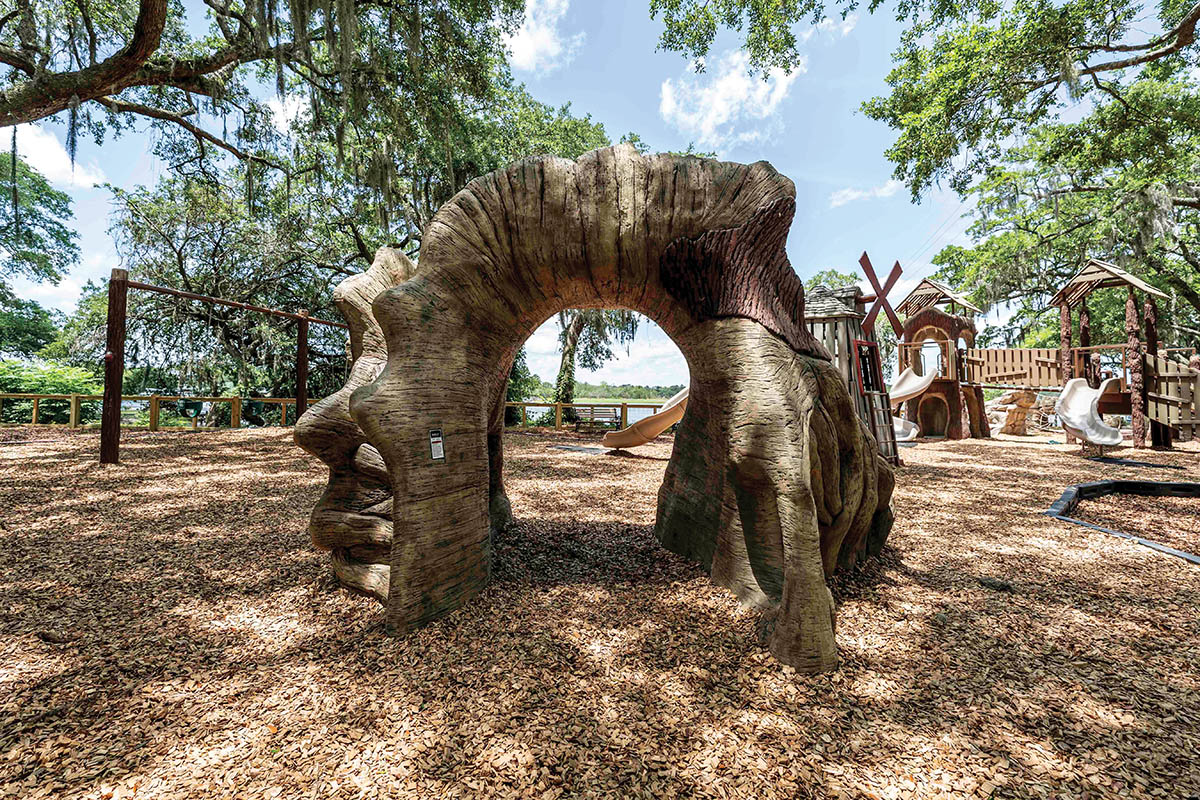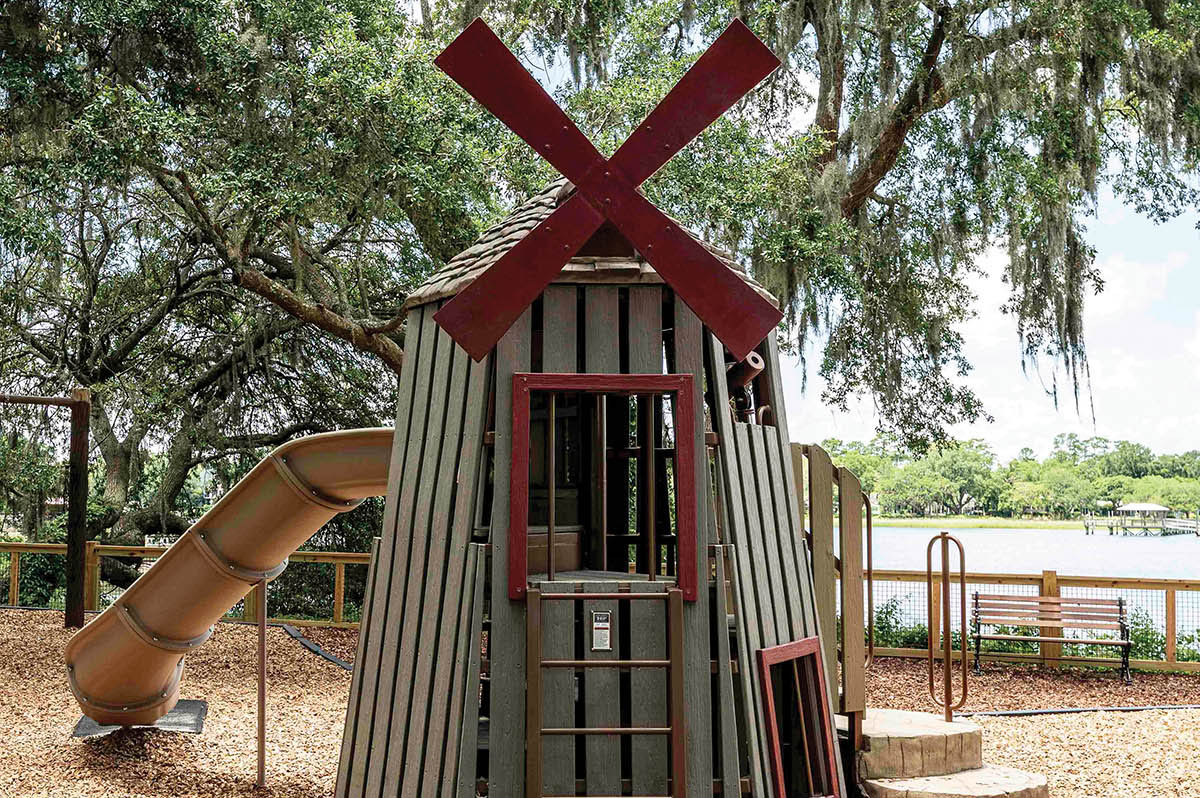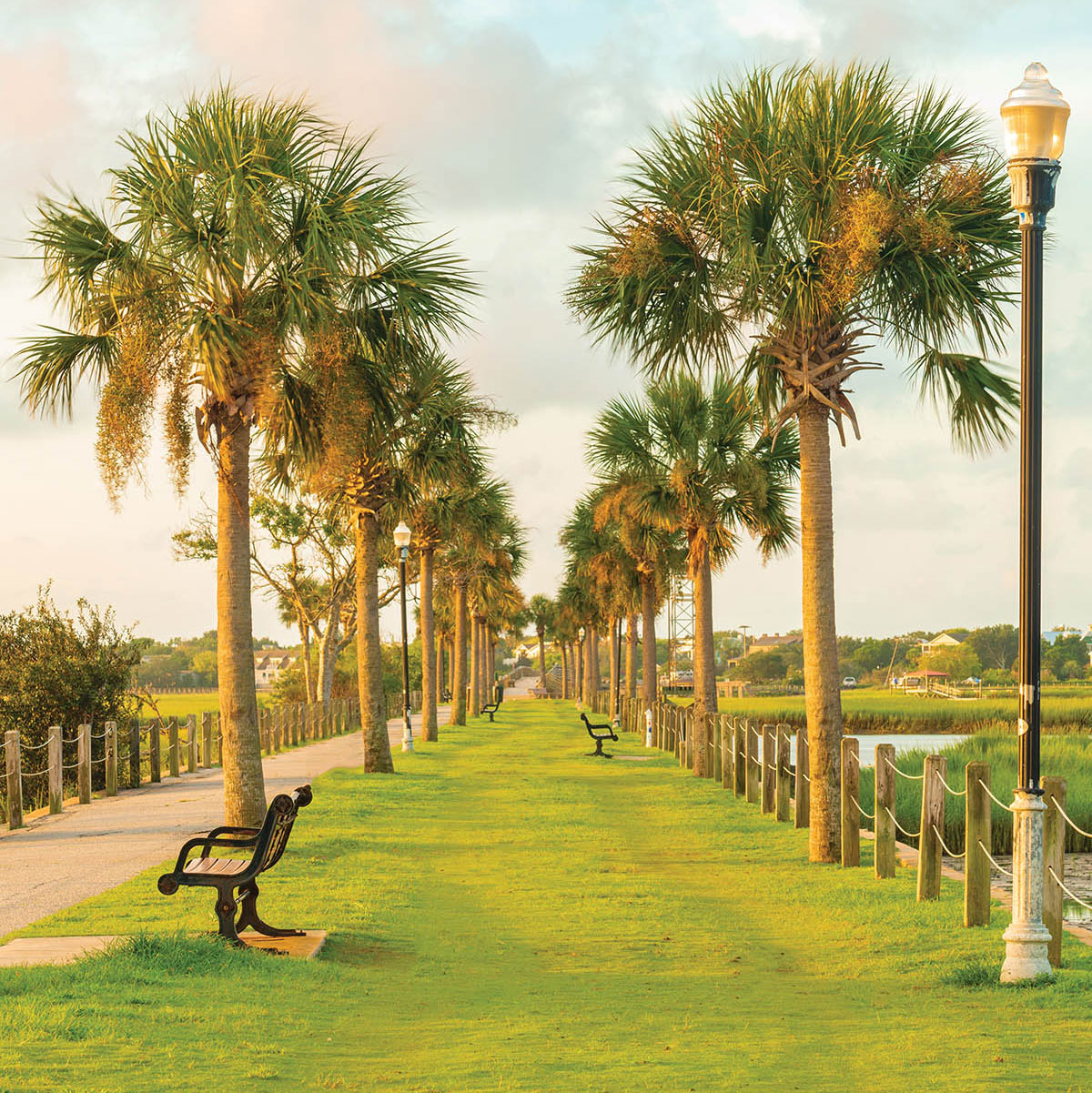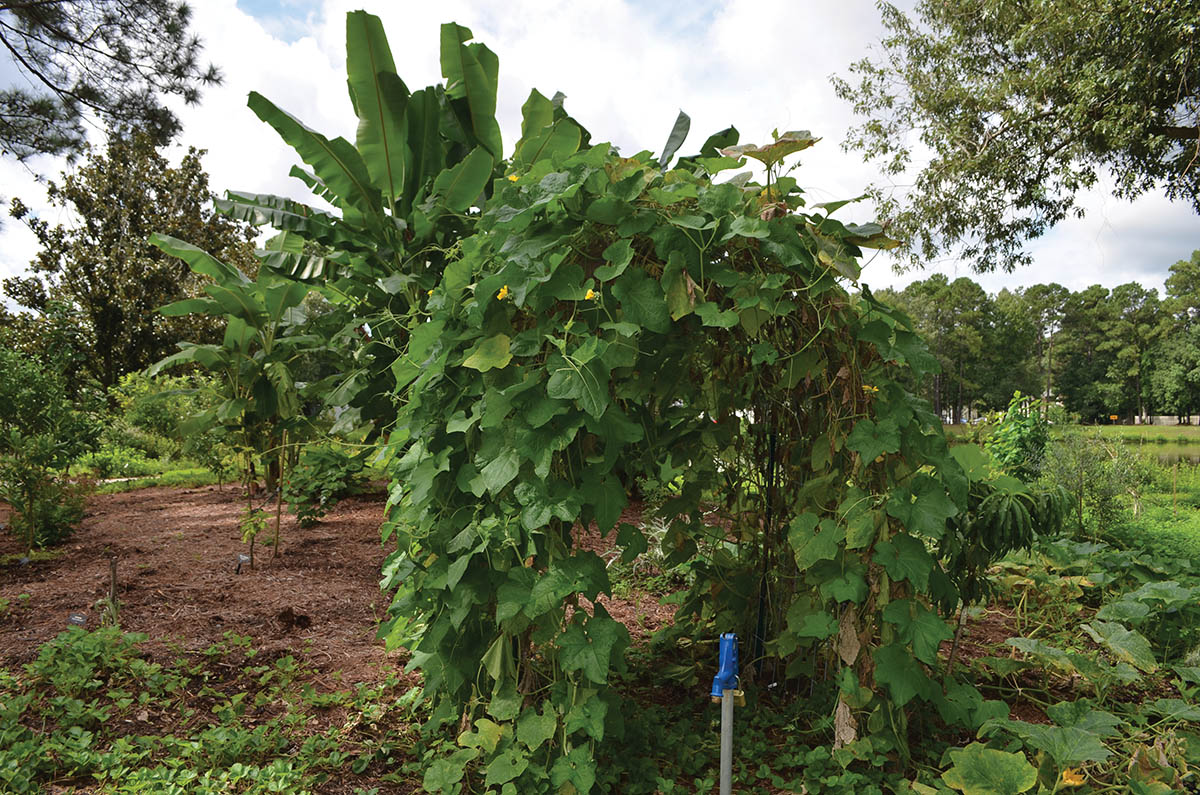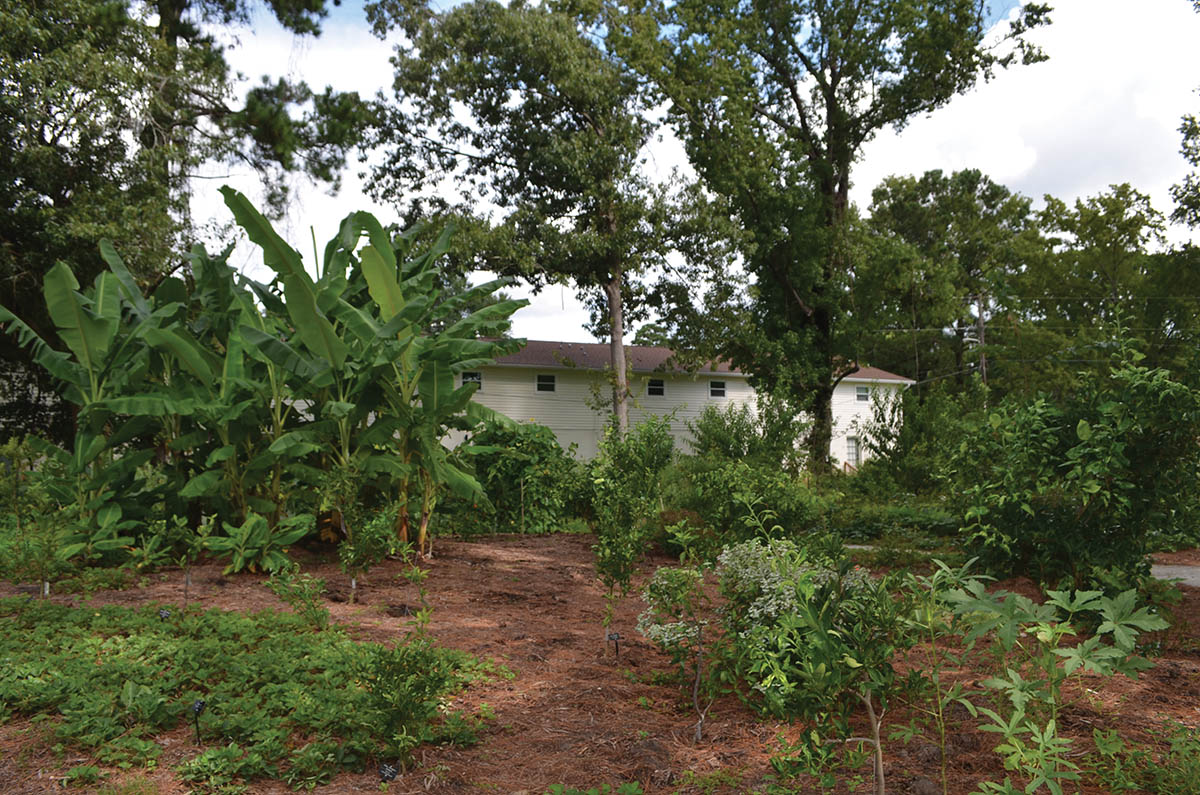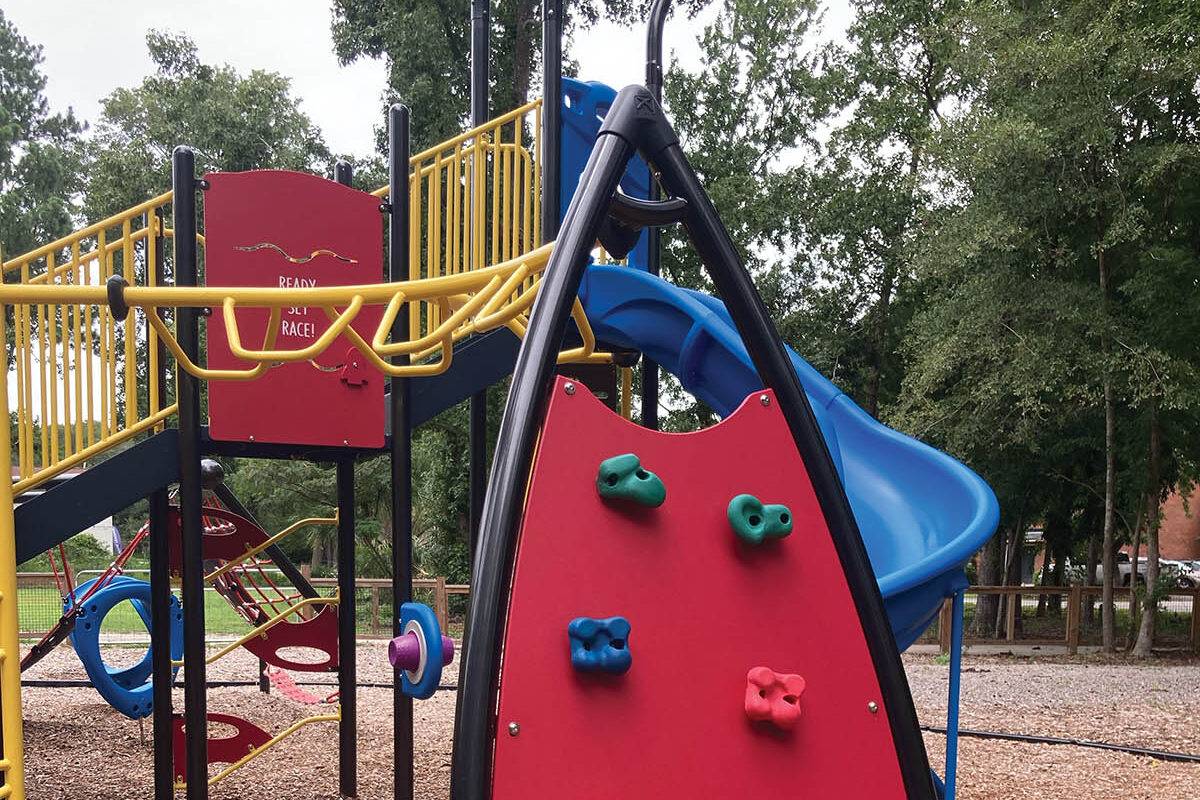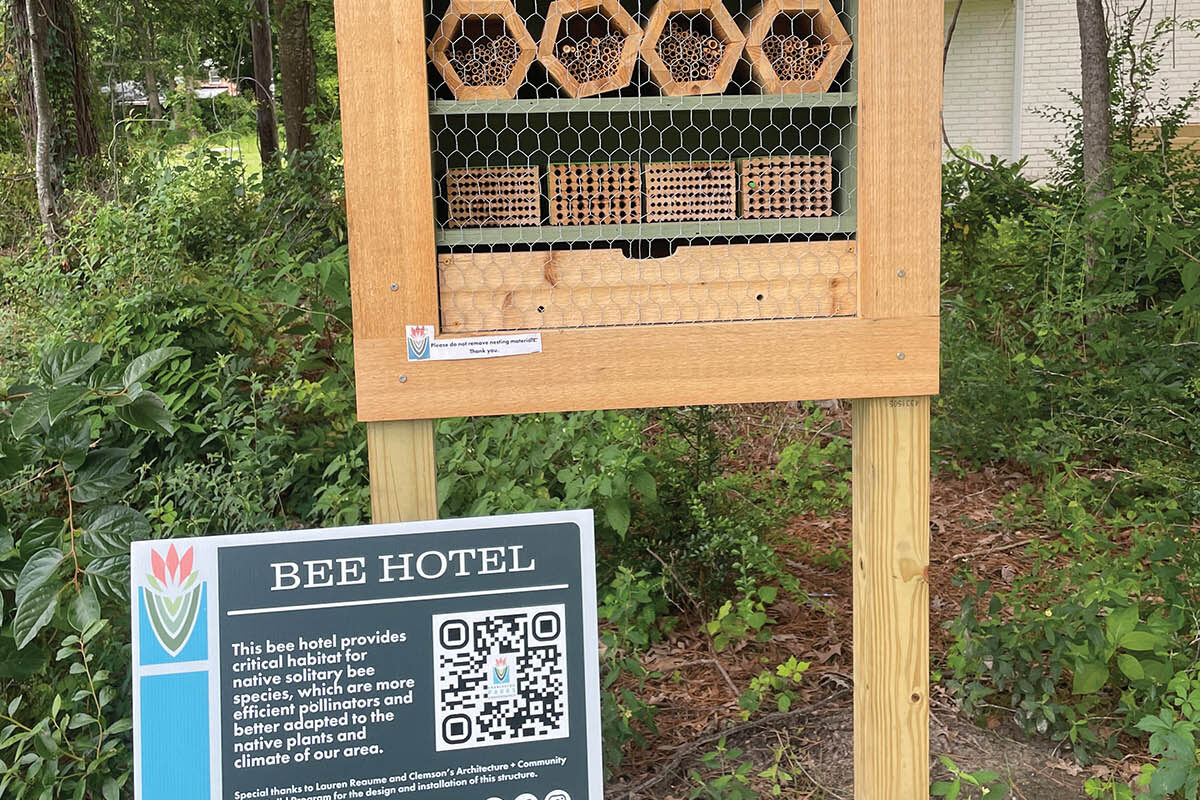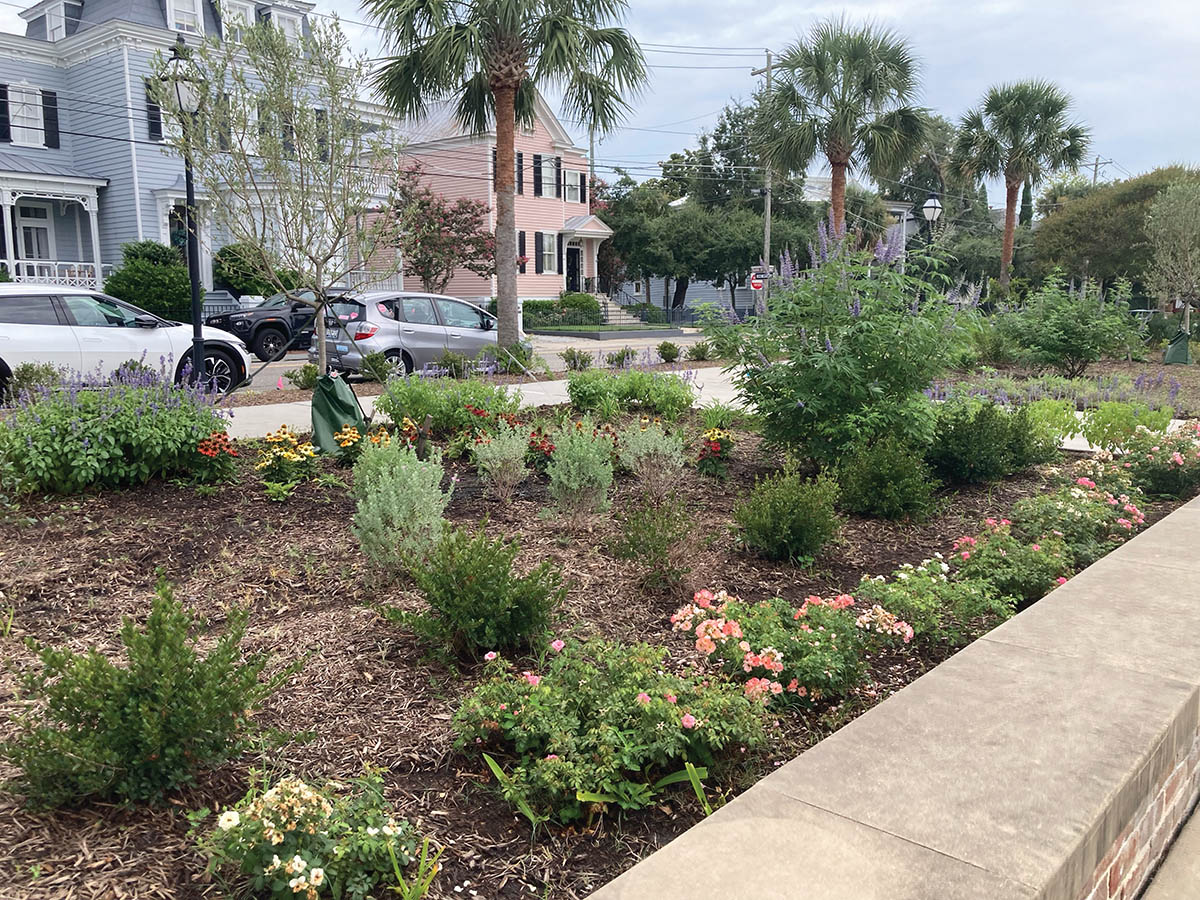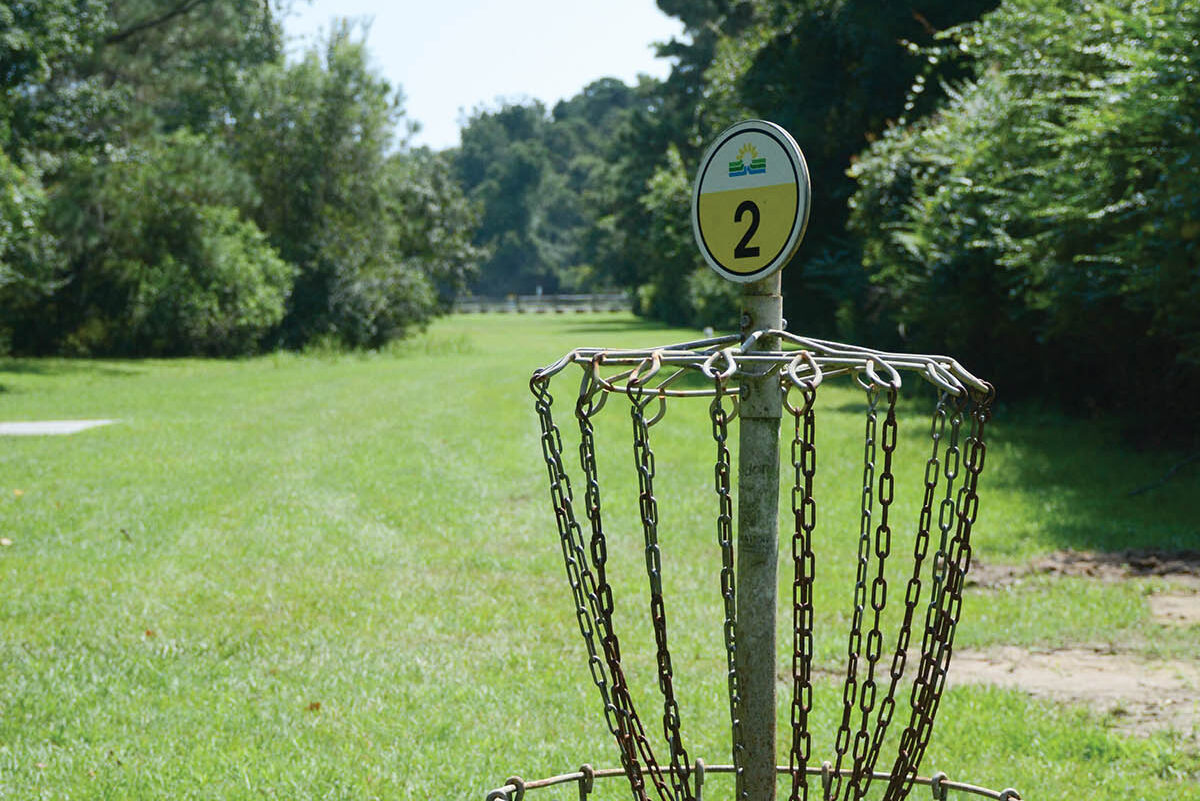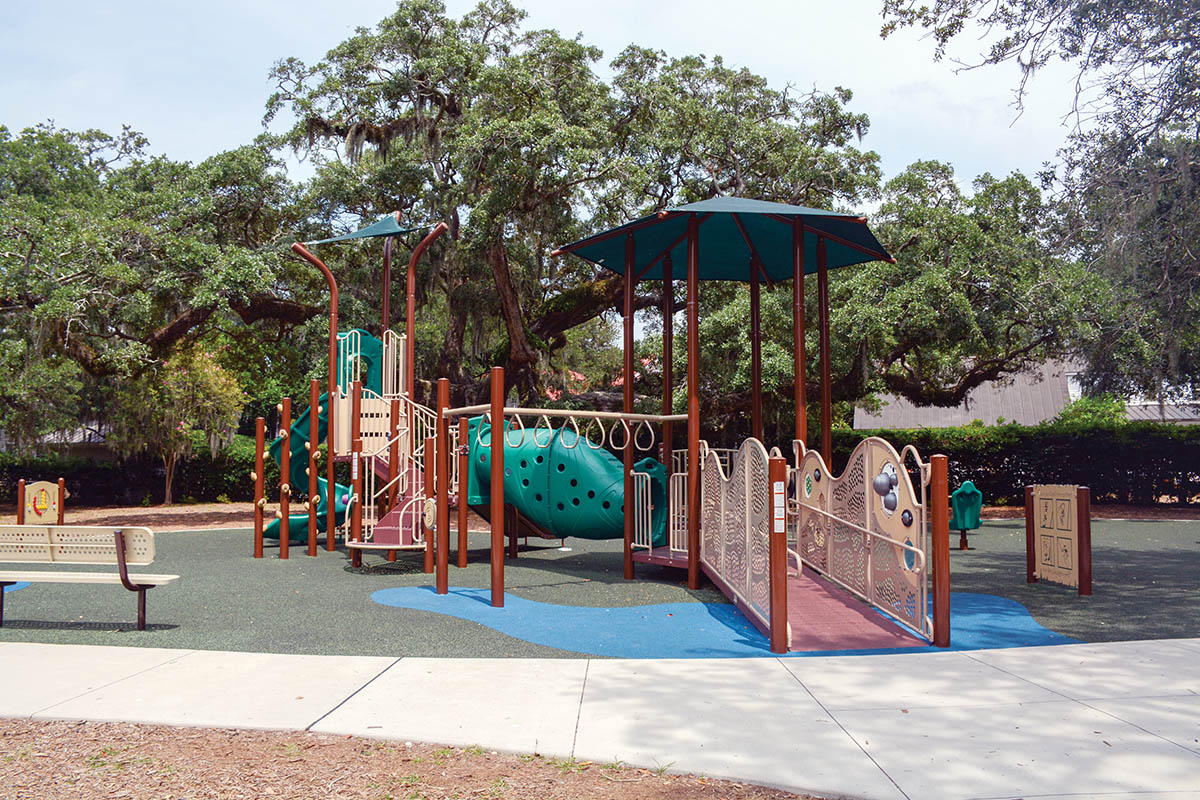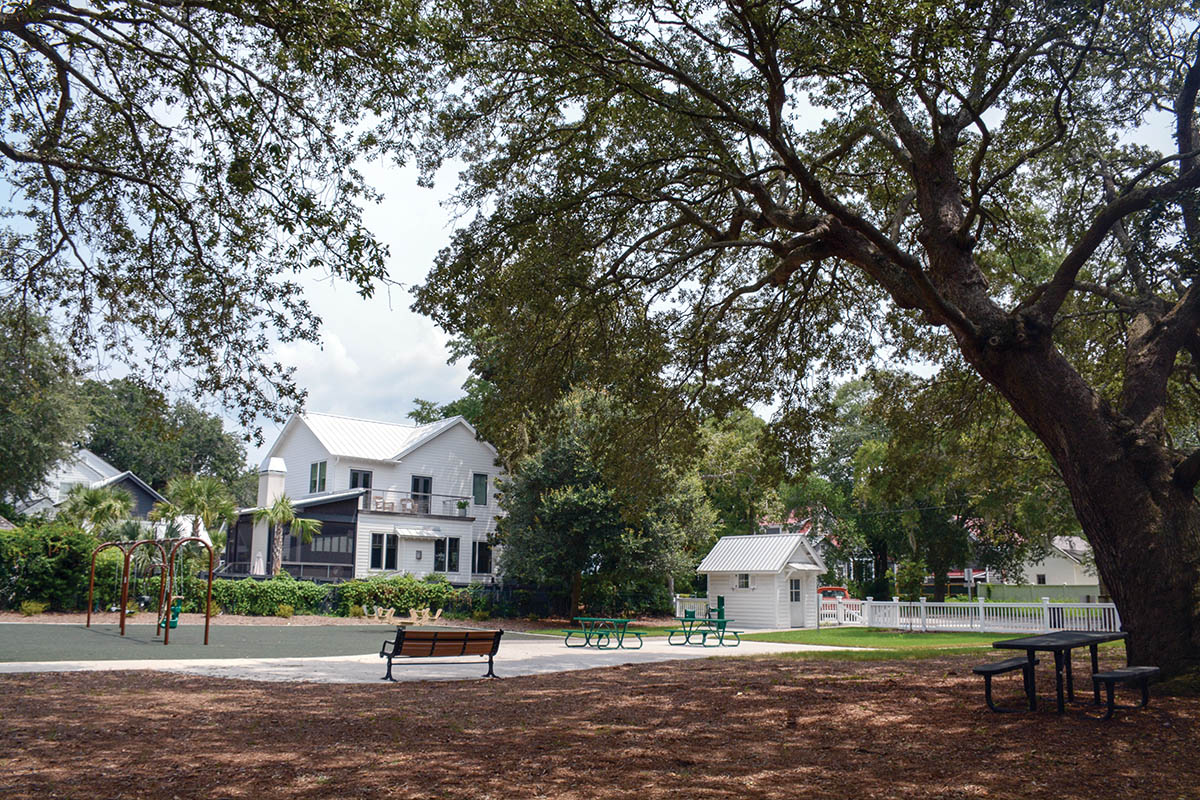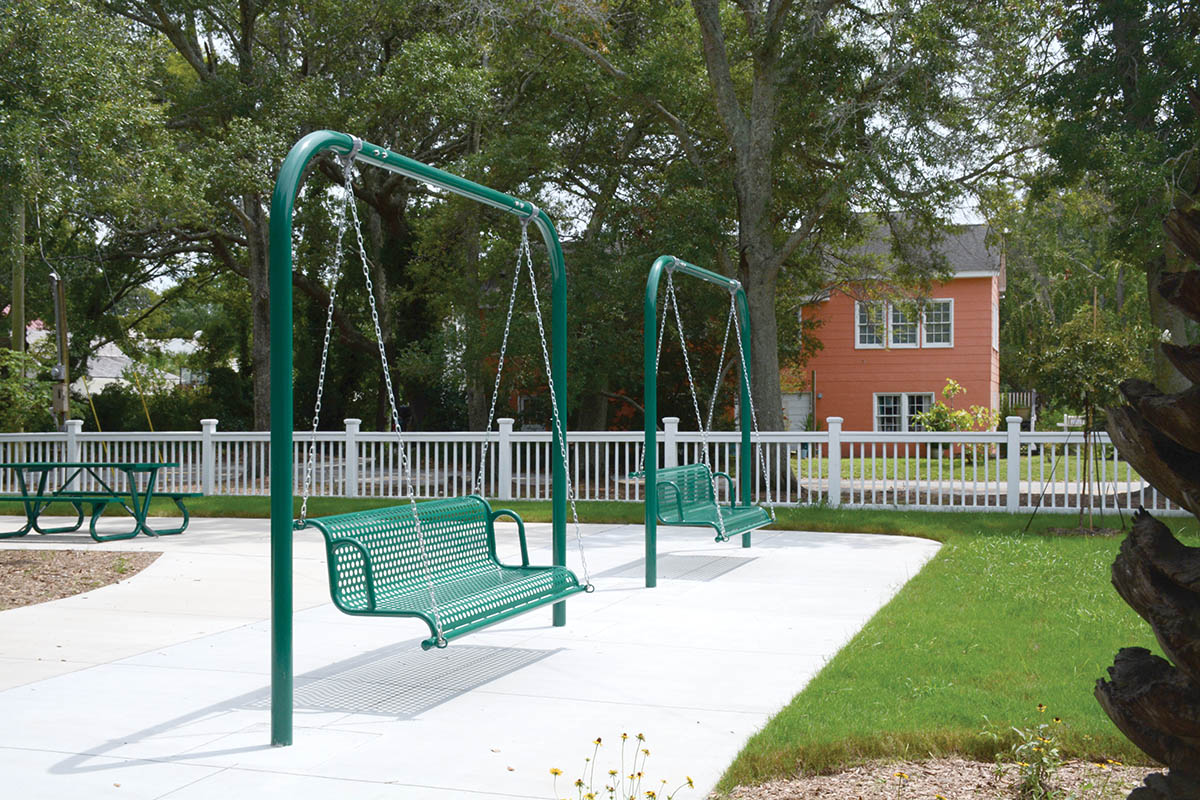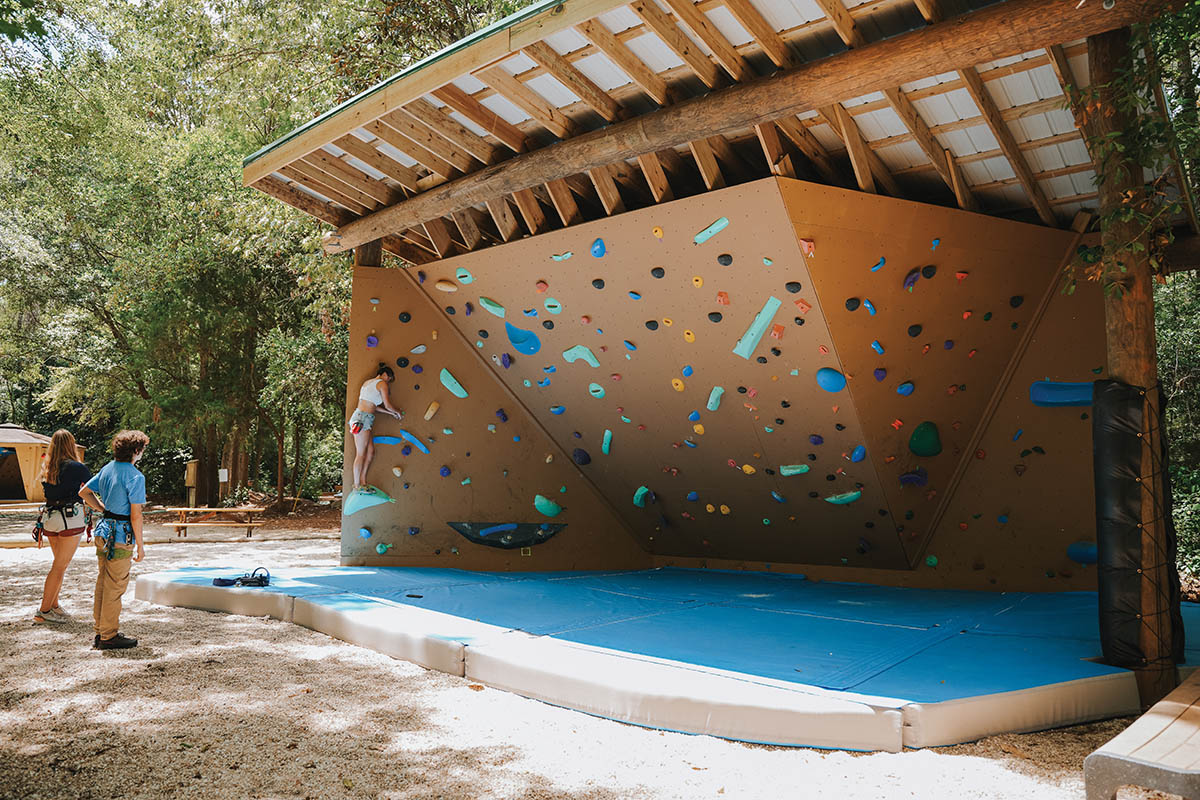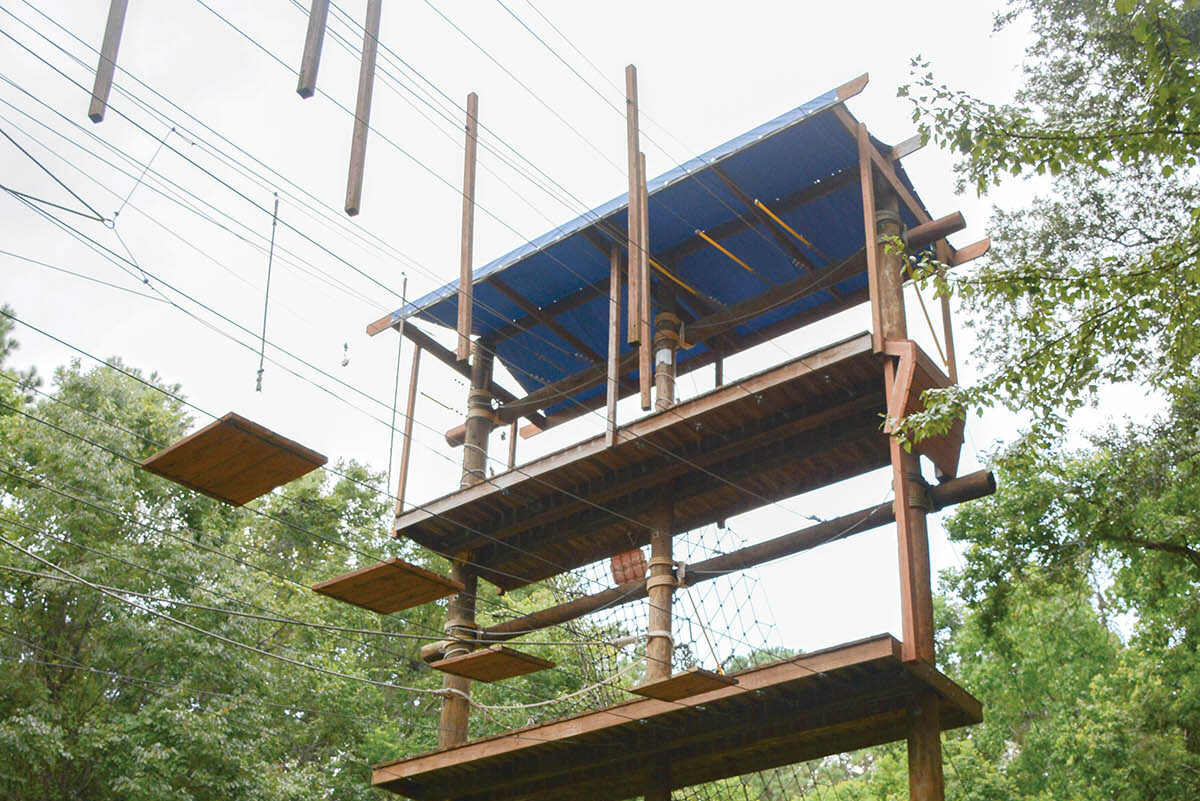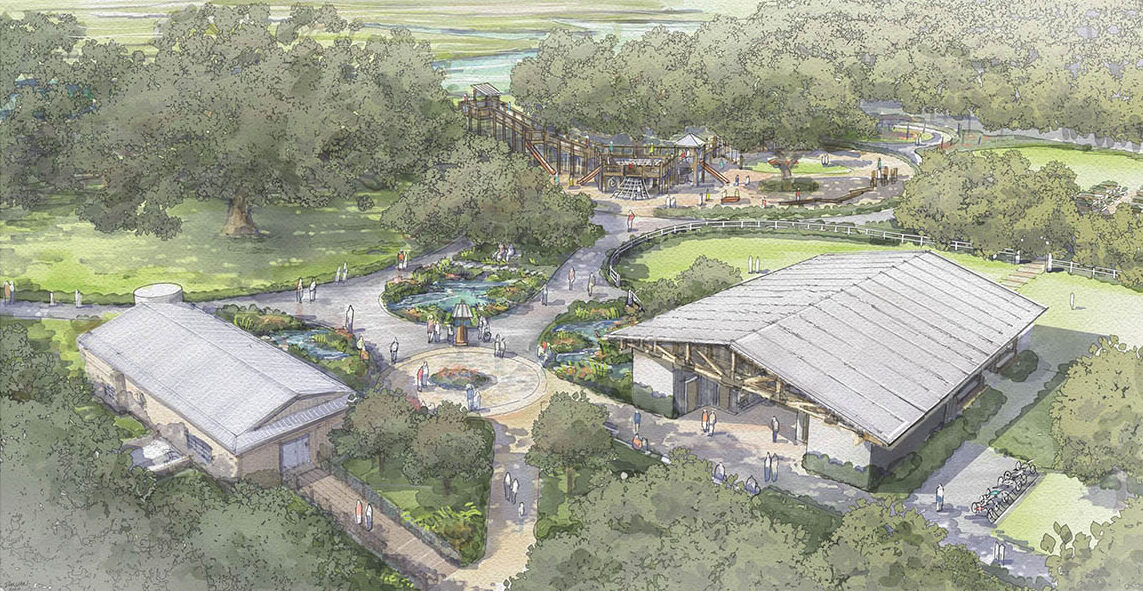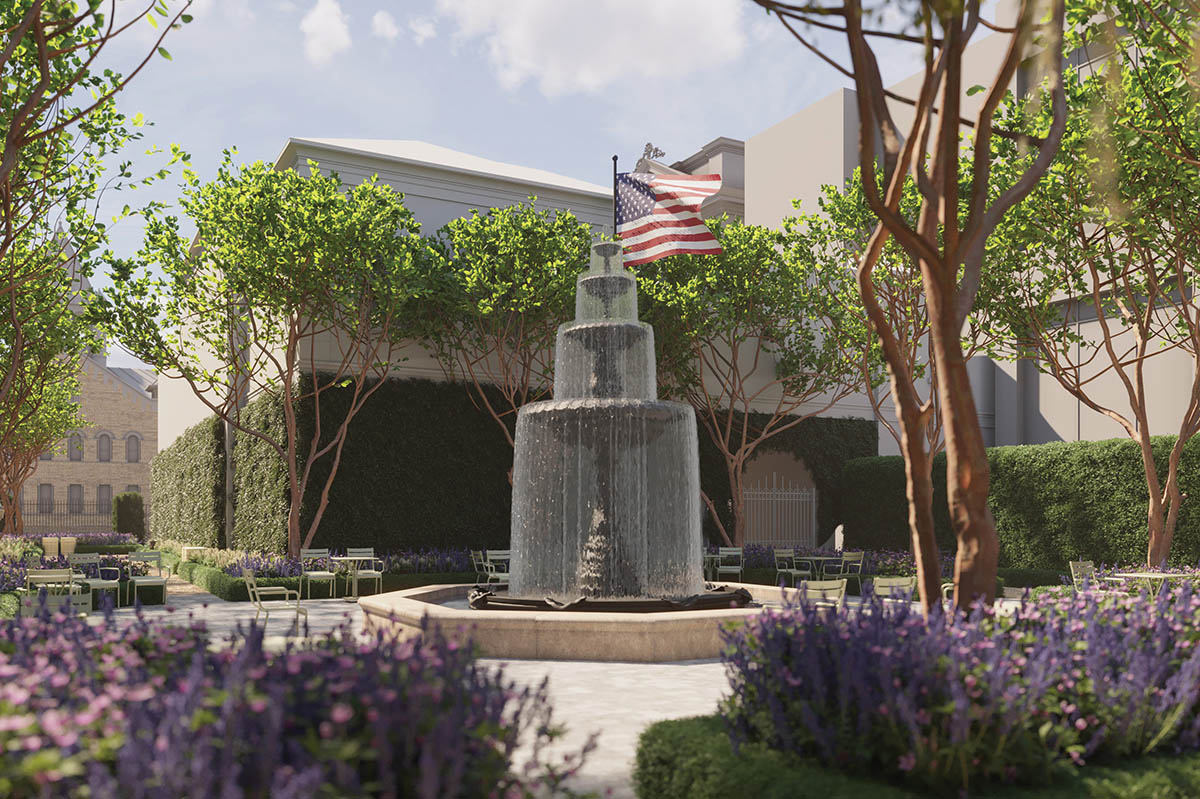Boasting South Carolina’s first public food forest, a shaded playground, and a scenic pond, Mulberry Park is ripe for exploration. Add in its proximity to the West Ashley Bikeway (reached via a dock overlooking another pond), and you have the opportunity to pedal, walk, and nature-watch for miles.
The City of Charleston installed the playground last winter, fencing in the colorful new equipment, as well as a sprawling oak tree that’s perfect for picnicking under. Nearby, a pavilion features a living green roof and rain catchment system, and just beyond, a footbridge draws visitors to the food forest. A buzzing pollinator garden and displays of seasonal crops (eggplants and peppers should be producing through November) mark the entrance before paths lead off through the half acre planted by the Charleston Parks Conservancy using a South Carolina Forestry Commission grant.
Food forests include seven layers of edibles—from trees down to ground covers—and the fruits, veggies, nuts, herbs, and berries that this one yields are free to anyone who wishes to harvest them. “I’ve seen people here cutting herbs or gathering a few peaches, blueberries, or artichokes,” says the conservancy’s community garden manager, Sam Haab. However, many of the edibles won’t begin producing for another year or two. In the meantime, there’s plenty of inspiration to be gleaned from the selection of plants (including some, like persimmons, that you may not have thought to grow), as well as the space-maximizing design.
“The food forest has generated a lot of interest from other neighborhoods and communities who would like to see something similar in their backyards,” says Haab. In fact, the Charleston Parks Conservancy is planting a second such forest—this one in the Ashleyville-Maryville neighborhood at the other end of the Bikeway—this month.

